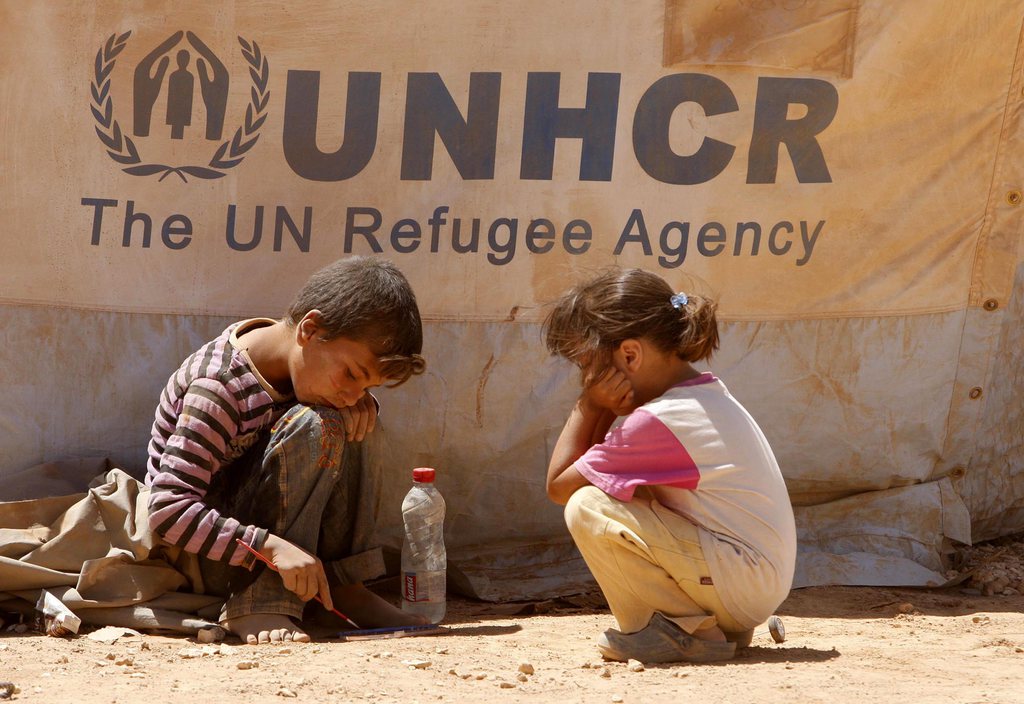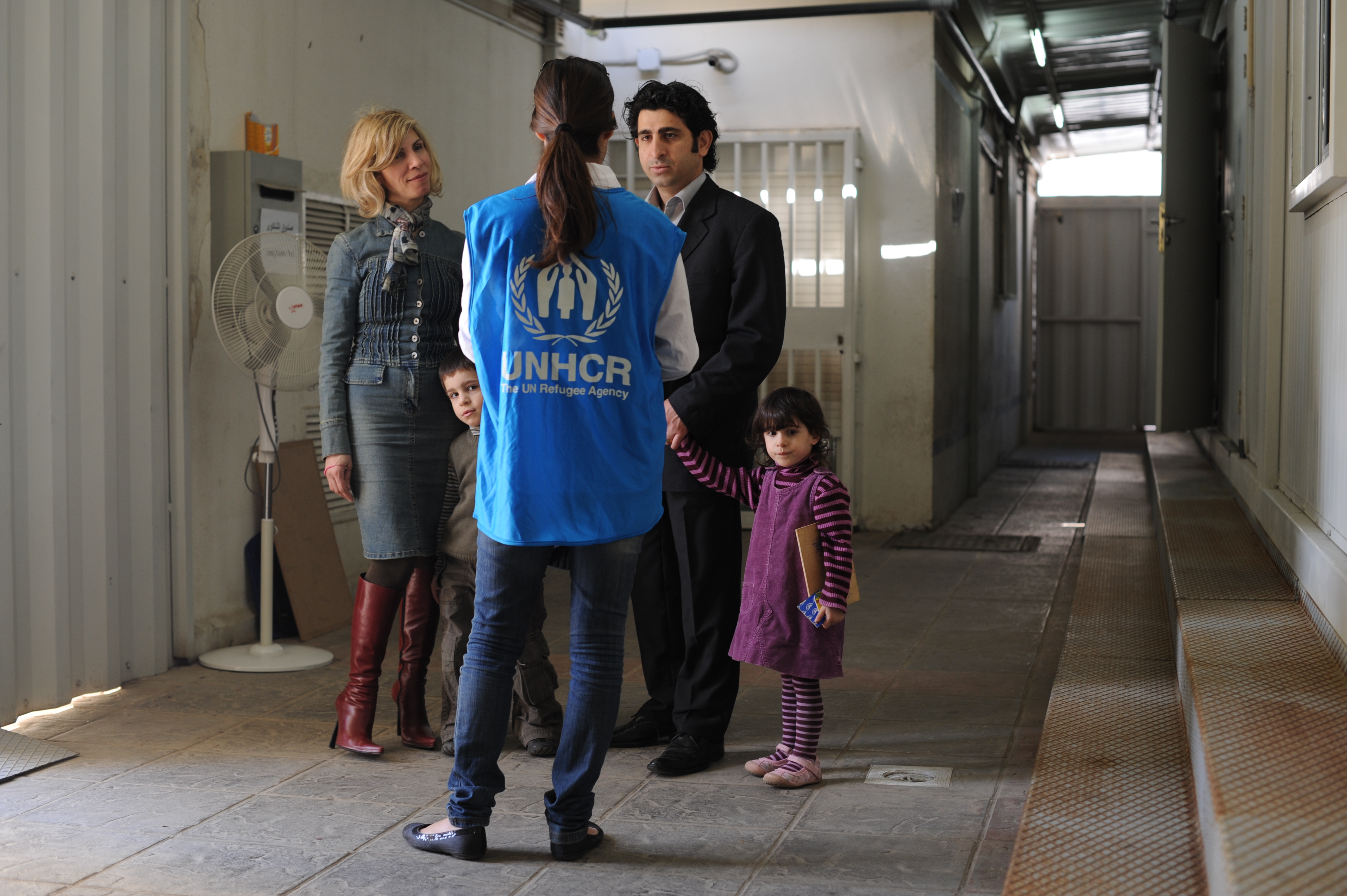‘Chemical analysis won’t tell you who released the agent’

An alleged chemical bombing outside the Syrian capital Damascus, with potentially hundreds of civilian victims, has left the international community horrified. But the full extent and exact location of the attack must still be verified, says Swiss chemical weapons expert Stefan Mogl.
According to reports, the attack took place on Wednesday in Ghouta, east of Damascus, with a death toll exceeding 1,000, including many children.
Some foreign chancelleries have pointed the finger of blame at the Assad regime, while other nations are hedging their bets, hoping that a United Nations weapons inspection team that arrived recently in Syria will be able to access the site.
Mogl, head of chemistry at the Swiss government’s Spiez Laboratory, was asked this week by the German magazine Spiegel to evaluate a series of videos showing victims of the alleged attack. He said that while the images seem authentic, checks in the field by the UN inspectors are needed to back up any claims.
swissinfo.ch: What do we know from the videos you have seen ?
Stefan Mogl: According to the Spiegel, all these video clips were all uploaded on August 21, but they cannot verify their authenticity. What we can see on the clips is a range of different types of symptoms, from myosis [constricted pupils] to excessive secretions from the eyes, nose and mouth. We see spasms and cramps, we see people gasping for air and we see tremors, muscle tremors. These can be described as textbook symptoms for nerve agent poisoning.
Taken with the significant number of subjects, including small children, there is an indication of a nerve agent release in this case in the area. But we don’t know for sure and the only way to know is to go there and take samples.
swissinfo.ch: What elements are missing?
S.M.: To prove the release of chemical weapons, you have to have samples from the site. Because the situation is very political, requiring proof of the release of a particular chemical is a necessity.
swissinfo.ch: Would the UN inspection team in Damascus be able to do that if they were given permission?
S.M.: They would certainly be able to do it and I believe it is the only way to go. My assumption is that there is a whole array of sample available now but the problem is that you have to prove the chain of custody.
You may be fully confident the samples you have have not been tampered with, but so long as you cannot prove that someone did not have access to that sample, other than an independent body, the value of that sample is limited.
So in effect you need the UN team to go to the site, take a sample that they seal on the spot, documenting it and bringing to a reputable laboratory for analysis.
swissinfo.ch: Would that be particularly difficult under the circumstances?
S.M.: If the UN team had access, it would be pretty straightforward. I assume the inspectors in Damascus have the protocols and equipment and have trained extensively for this. They could take the samples out of the country and pass them on to a network of certified laboratories, in particular for environmental analysis.
swissinfo.ch: If the use of a nerve agent or other chemical weapons was confirmed, what would need to be done for the survivors?
S.M.: The survivors should be taken care of before any confirmation takes place because nerve agents act very quickly. People who survive an attack and display symptoms need to be treated with antidotes such as atropine and need to be under medical care. They will then have a good chance of recovery if the exposure wasn’t too strong, but that care has to be immediate.
swissinfo.ch: There is a lot of speculation as to who is responsible. Would chemical analysis provide a clear answer to people’s questions?
S.M.: I don’t think conclusively. Generally, if you want to assign responsibility for the release of a chemical agent, the normal way would be to find the munitions or the dissemination devices that were used. Sometimes the particular devices give indications who owned them before the release.
You also need witness accounts on the ground to find out where the munitions were launched from and who was in charge of the particular territory at the time. But chemical analysis won’t tell you who released the agent.
swissinfo.ch: The French and British government released results earlier in the Syrian conflict that they claimed proved the use of chemical agents. How do you evaluate these results?
S.M.: I consider it extraordinarily important that these investigations were carried out and the results released. That said, despite the important information that is provided to the international community, you will never be able to prove beyond doubt that these samples were never tampered with. If you cannot prove that nobody had access to the samples, someone can always claim they were dubious.
Two broad categories: nerve agents and blistering agents.
Nerve agents are designed to kill whereas the others are intended to cause major harm.
Chemical agents either poison or injure by passing through the respiratory system or by contact to the eyes or skin.
A gas mask with the appropriate filter and a protective suit, as worn by the armed forces (and certain first responder organisations), usually provide sufficient protection.
Chemical weapons released in a civilian, urban environment, with no protection available, would be extremely dangerous. They would, however, also dissipate after a certain time depending on weather conditions.
Source: Stefan Mogl, Spiez Laboratory
The laboratory is the Swiss centre of expertise for protection against nuclear, biological and chemical (NBC) threats and hazards.
It develops and safeguards the necessary basic scientific and technological knowledge for comprehensive NBC protection.
It also provides national and international organisations, the Swiss authorities and the general population with services to prevent, to prepare for and to manage disasters and emergencies.
The laboratory also uses its technical expertise to support Switzerland’s arms control and peacekeeping efforts.
Source: Spiez Laboratory

In compliance with the JTI standards
More: SWI swissinfo.ch certified by the Journalism Trust Initiative

You can find an overview of ongoing debates with our journalists here. Please join us!
If you want to start a conversation about a topic raised in this article or want to report factual errors, email us at english@swissinfo.ch.